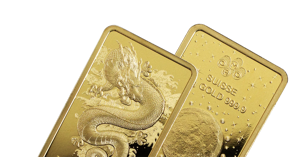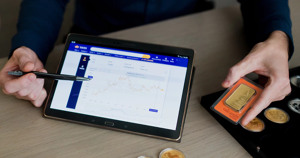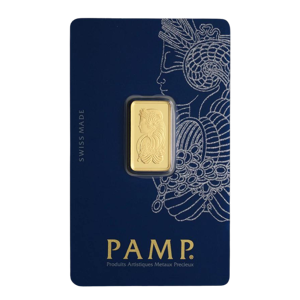Tavex uses cookies to ensure website functionality and improve your user experience. Collecting data from cookies helps us provide the best experience for you, keeps your account secure and allows us to personalise advert content. You can find out more in our cookie policy.
Please select what cookies you allow us to use
Cookies are small files of letters and digits downloaded and saved on your computer or another device (for instance, a mobile phone, a tablet) and saved in your browser while you visit a website. They can be used to track the pages you visit on the website, save the information you enter or remember your preferences such as language settings as long as you’re browsing the website.
| Cookie name | Cookie description | Cookie duration |
|---|---|---|
| tavex_cookie_consent | Stores cookie consent options selected | 60 weeks |
| tavex_customer | Tavex customer ID | 30 days |
| wp-wpml_current_language | Stores selected language | 1 day |
| AWSALB | AWS ALB sticky session cookie | 6 days |
| AWSALBCORS | AWS ALB sticky session cookie | 6 days |
| NO_CACHE | Used to disable page caching | 1 day |
| PHPSESSID | Identifier for PHP session | Session |
| latest_news | Helps to keep notifications relevant by storing the latest news shown | 29 days |
| latest_news_flash | Helps to keep notifications relevant by storing the latest news shown | 29 days |
| tavex_recently_viewed_products | List of recently viewed products | 1 day |
| tavex_compare_amount | Number of items in product comparison view | 1 day |
| Cookie name | Cookie description | Cookie duration |
|---|---|---|
| chart-widget-tab-*-*-* | Remembers last chart options (i.e currency, time period, etc) | 29 days |
| archive_layout | Stores selected product layout on category pages | 1 day |
| Cookie name | Cookie description | Cookie duration |
|---|---|---|
| cartstack.com-* | Used for tracking abandoned shopping carts | 1 year |
| _omappvp | Used by OptinMonster for determining new vs. returning visitors. Expires in 11 years | 11 years |
| _omappvs | Used by OptinMonster for determining when a new visitor becomes a returning visitor | Session |
| om* | Used by OptinMonster to track interactions with campaigns | Persistent |
| Cookie name | Cookie description | Cookie duration |
|---|---|---|
| _ga | Used to distinguish users | 2 years |
| _gid | Used to distinguish users | 24 hours |
| _ga_* | Used to persist session state | 2 years |
| _gac_* | Contains campaign related information | 90 days |
| _gat_gtag_* | Used to throttle request rate | 1 minute |
| _fbc | Facebook advertisement cookie | 2 years |
| _fbp | Facebook cookie for distinguishing unique users | 2 years |
The Consumer Price Index (CPI) and Gold Price

As of Monday, 11th March 2024, gold prices are at a crossroads. This is driven by recent data on the labour market in the United States and remarks made by Federal Reserve members, particularly Chairman Powell. The future Consumer Price Index (CPI) data will have a significant impact on how the market anticipates events and how gold prices move in the near future.
The nexus between the Consumer Price Index (CPI) and gold prices is a study of economic indicators reflecting the health, economic growth, and direction of global financial systems.
The CPI, a measure of inflation, tracks the average price change over time for goods and services consumed by households. Gold, a precious metal, has been a cornerstone of financial systems, serving as a hedge against inflation, currency devaluation, and economic instability.
This article delves into their relationship, historical trends, the factors influencing both, and predictions for their future interactions.
Recent News

Gold price falls ahead of U.S CPI Data Release. This week’s key catalyst for gold is anticipated to be Tuesday’s release of CPI data. The case for an earlier Fed rate decrease could be strengthened by a lower CPI figure, which would make gold more appealing. There’s a strong chance that the US will lower rates three or four times, beginning as early as June, according to market projections.
More on the this news here: What is Happening to the Price of Gold?
Understanding the Consumer Price Index (CPI)
What is CPI?
The Consumer Price Index (CPI) is a vital economic indicator, measuring the average change over time in the prices paid by urban consumers for a basket of goods and services. It reflects the cost of living and purchasing power of a country’s currency, making it an essential tool for economic policy and decision-making.
To calculate CPI, statisticians collect prices for a predefined ‘basket’ of goods and services, which includes categories such as housing, food, transportation, and healthcare. The prices are compared over time, and the CPI is expressed as an index in relation to a base year.
Equation:
Basket Total Cost Year T ÷ Basket Total Cost Base Year x 100 = CPI
CPI is crucial for its role in adjusting income payments, from wages to pensions, reflecting the real value of money. It guides monetary policy, helping central banks set interest rates to manage inflation. Additionally, it provides a clear view of the inflation rate, which is vital for economic planning and forecasting.
The Role of Gold in the Economy

Gold as an Investment
Gold has historically been a popular investment choice, prized for its tangible value and scarcity. It acts as a hedge against inflation and currency devaluation, preserving wealth over the long term. Investors often turn to gold in times of economic uncertainty. For example this was seen during the covid-19 pandemic.
Gold and Economic Stability
Gold’s price tends to move inversely to the economic stability of a nation. During periods of high inflation or economic turmoil, gold prices typically rise as investors seek safe-haven assets when buying gold. Conversely, in stable economic periods of times, gold may see less investor interest compared to other investments.
Historical Relationship between CPI and Gold Prices

Gold is frequently viewed as an inflation hedge that guards against investors’ money losing purchasing value. Examining the historical data reveals an intriguing relationship between CPI and gold prices.
Generally, during periods of high inflation (as indicated by rising CPI), gold prices have increased
This trend underscores gold’s role as a protective investment against diminishing purchasing power.
Specific historical events, such as the oil crisis of the 1970s or the financial crisis of 2008, highlight how gold prices can spike in response to sudden increases in CPI.
However data also suggests that changes in the CPI and gold returns have typically had a modest linear relationship. Changes in CPI inflation have only been able to account for 16% of the fluctuation in gold prices since 1971.
Factors Influencing Gold Prices

1) Inflation and Deflation
Gold prices are sensitive to changes in inflation and deflation. Inflation reduces the value of currency, making gold, which retains its value, more attractive. During deflation, when the purchasing power of currency increases, gold’s allure may diminish.
More on the topic here: How Does Inflation Affect Gold Prices?
2) Economic Indicators
Beyond CPI, other economic indicators such as unemployment rates, GDP growth, and interest rates also influence gold prices. For instance, lower interest rates reduce the opportunity cost of holding non-yielding assets like gold, making it more attractive.
3) Global Political Stability
Political instability and uncertainty can drive investors towards gold as a safe-haven asset. Wars, political upheaval, and economic sanctions can all increase gold’s desirability as a secure investment. For instance, since the Israel-Hamas conflict began, the price of gold has increased by more than $300 per ounce, and some analysts predict it may surpass $2,300.
More on the topic here: How Does Geopolitics Affect The Price of Gold?
How CPI Affects Gold Prices

As CPI rises, indicating higher inflation, the value of currency diminishes. Gold becomes a preferred asset for preserving value, leading to increased demand and higher prices.
Investors’ perceptions of future economic conditions, influenced by CPI data, can significantly impact gold prices. Anticipation of higher inflation may drive increased investment in gold.
The Future of CPI and Gold Prices
Future CPI and gold prices will be influenced by a myriad of factors, including monetary policies, inflation rates, and global economic conditions. Technological advancements, environmental concerns, and social trends can also play significant roles.
Any rebound in U.S. yields on a potential CPI disappointment could trigger profit taking and a pullback at the current overbought market levels, but softer yields on a soothing CPI could encourage another test of the $2,200 level
Ipek Ozkardeskaya, senior analyst at Swissquote Bank
Innovations in financial technology and changes in consumer behavior can impact both CPI and gold prices. For example, digital currencies and blockchain technology could alter traditional financial systems and investment strategies.
Key Takeaways
The intricate relationship between the Consumer Price Index and gold prices offers valuable insights into the broader economic landscape.
By understanding historical trends, factors influencing both metrics, and potential future developments, investors and policymakers can make more informed decisions.
As we navigate an ever-evolving economic environment, the dynamic interplay between CPI and gold will continue to be a topic of keen interest.

















